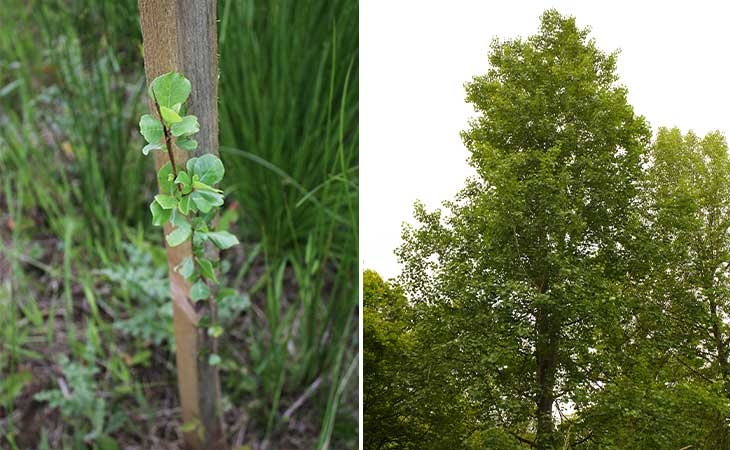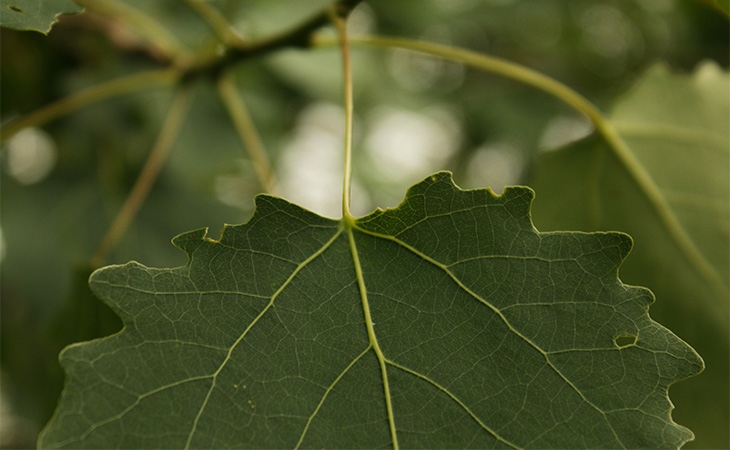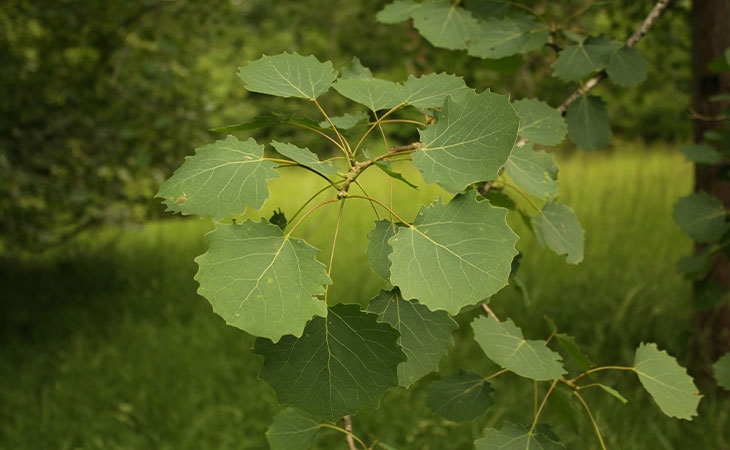Tree of the month: Aspen
Each month we’re going to bring you a profile of one of the UK native tree species being planted in the Silk Wood Community Planting Project – this July it’s aspen.
Alongside the black poplar (Populus nigra) – the aspen is the only other native poplar species in the UK. It supports a huge variety of species which rely on the aspen for their lifecycles – in fact, the most host-specific species of any boreal tree (boreal is a term describing trees or forests that are found in high-latitude environments, with freezing temperatures for 6-8 months of the year).
Aspen can be found nearly anywhere in the world, from North America to Russia, Africa, and Asia; and from sea-level up to 1900m (in the Pyrenees). Its ability to live in different conditions makes it a great tree to plant for a changing climate - it’s been recorded surviving at -40 °C, is drought tolerant and grows in high winds.

The bark of the aspen features diamond-shaped pores (called lenticles), and its wood is light but strong, so an ideal material for oars and paddles. Because it’s not too flammable, it’s also used to make matches.

At this time of year, the most stand-out feature is the leaves. If you look closely, you can see the stalks are flat and flexible at the joint. This makes them quiver and flutter in the slightest breeze, giving the tree its other common name, ‘quaking aspen’.
The Celts believed the trembling of the leaves was the tree communicating between this world and the next – probably why crowns made of aspen have been found in ancient burial mounds.

You too can be a part of Westonbirt's story! Every contribution goes towards vital tree conservation efforts, ensuring this natural wonder continues to inspire families for years to come. Donate today and become a champion for Westonbirt and the community groups it supports...
